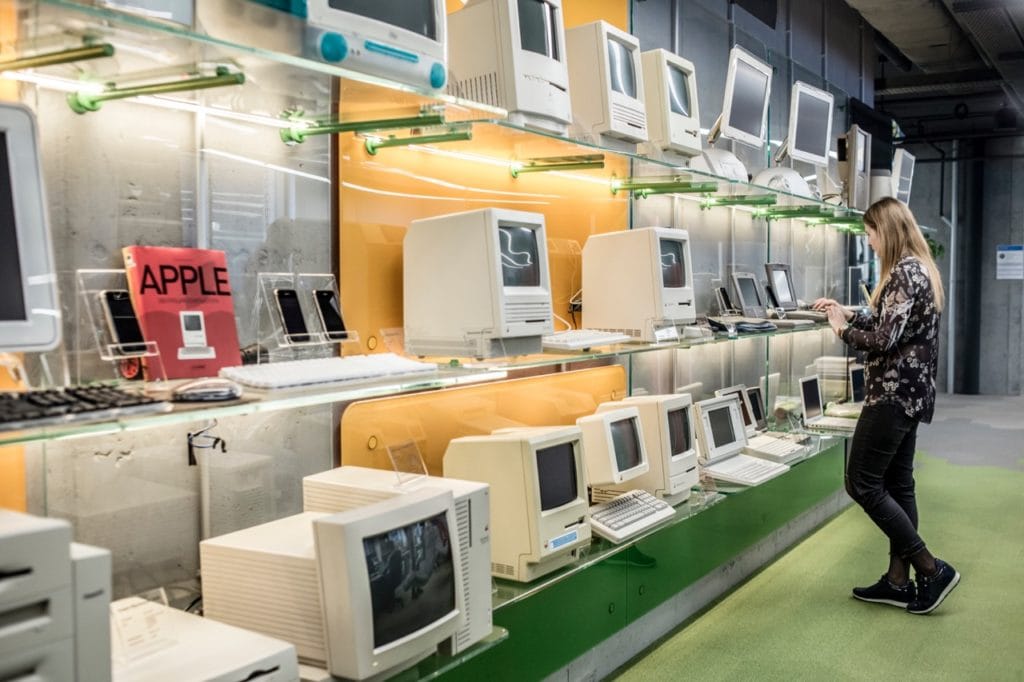There is good reason to want to see a reinvigorated approach to competition in America, but it's important to remember that competition is enabled or constrained not just by mergers and acquisitions. Companies can use a whole package of laws to attain and maintain dominance, to the detriment of the public interest.
This statement was originally published on eff.org on 7 June 2019.
By Cory Doctorow
Today, Apple is one of the largest, most profitable companies on Earth, but in the early 2000s, the company was fighting for its life. Microsoft’s Windows operating system was ascendant, and Microsoft leveraged its dominance to ensure that every Windows user relied on its Microsoft Office suite (Word, Excel, Powerpoint, etc). Apple users – a small minority of computer users – who wanted to exchange documents with the much larger world of Windows users were dependent on Microsoft’s Office for the Macintosh operating system (which worked inconsistently with Windows Office documents, with unexpected behaviors like corrupting documents so they were no longer readable, or partially/incorrectly displaying parts of exchanged documents). Alternatively, Apple users could ask Windows users to export their Office documents to an “interoperable” file format like Rich Text Format (for text), or Comma-Separated Values (for spreadsheets). These, too, were inconsistent and error-prone, interpreted in different ways by different programs on both Mac and Windows systems.
Apple could have begged Microsoft to improve its Macintosh offerings, or they could have begged the company to standardize its flagship products at a standards body like OASIS or ISO. But Microsoft had little motive to do such a thing: its Office products were a tremendous competitive advantage, and despite the fact that Apple was too small to be a real threat, Microsoft had a well-deserved reputation for going to enormous lengths to snuff out potential competitors, including both Macintosh computers and computers running the GNU/Linux operating system.
Apple did not rely on Microsoft’s goodwill and generosity: instead, it relied on reverse-engineering. After its 2002 “Switch” ad campaign – which begged potential Apple customers to ignore the “myths” about how hard it was to integrate Macs into Windows workflows – it intensified work on its iWork productivity suite, which launched in 2005, incorporating a word-processor (Pages), a spreadsheet (Numbers) and a presentation program (Keynote). These were feature-rich applications in their own right, with many innovations that leapfrogged the incumbent Microsoft tools, but this superiority would still not have been sufficient to ensure the adoption of iWork, because the world’s greatest spreadsheets are of no use if everyone you need to work with can’t open them.
What made iWork a success – and helped re-launch Apple – was the fact that Pages could open and save most Word files; Numbers could open and save most Excel files; and Keynote could open and save most PowerPoint presentations. Apple did not attain this compatibility through Microsoft’s cooperation: it attained it despite Microsoft’s noncooperation. Apple didn’t just make an “interoperable” product that worked with an existing product in the market: they made an adversarially interoperable product whose compatibility was wrested from the incumbent, through diligent reverse-engineering and reimplementation. What’s more, Apple committed to maintaining that interoperability, even though Microsoft continued to update its products in ways that temporarily undermined the ability of Apple customers to exchange documents with Microsoft customers, paying engineers to unbreak everything that Microsoft’s maneuvers broke. Apple’s persistence paid off: over time, Microsoft’s customers became dependent on compatibility with Apple customers, and they would complain if Microsoft changed its Office products in ways that broke their cross-platform workflow.
Since Pages’ launch, document interoperability has stabilized, with multiple parties entering the market, including Google’s cloud-based Docs offerings, and the free/open alternatives from LibreOffice. The convergence on this standard was not undertaken with the blessing of the dominant player: rather, it came about despite Microsoft’s opposition. Docs are not just interoperable, they’re adversarially interoperable: each has its own file format, but each can read Microsoft’s file format.
The document wars are just one of many key junctures in which adversarial interoperability made a dominant player vulnerable to new entrants:
- Hayes modems
- Usenet’s alt.* hierarchy
- Supercard’s compatibility with Hypercard
- Search engines’ web-crawlers
- Servers of every kind, which routinely impersonate PCs, printers, and other devices
Scratch the surface of most Big Tech giants and you’ll find an adversarial interoperability story: Facebook grew by making a tool that let its users stay in touch with MySpace users; Google products from search to Docs and beyond depend on adversarial interoperability layers; Amazon’s cloud is full of virtual machines pretending to be discrete CPUs, impersonating real computers so well that the programs running within them have no idea that they’re trapped in the Matrix.
Adversarial interoperability converts market dominance from an unassailable asset to a liability. Once Facebook could give new users the ability to stay in touch with MySpace friends, then every message those Facebook users sent back to MySpace – with a footer advertising Facebook’s superiority – became a recruiting tool for more Facebook users. MySpace served Facebook as a reservoir of conveniently organized potential users that could be easily reached with a compelling pitch about why they should switch.
Today, Facebook is posting 30-54% annual year-on-year revenue growth and boasts 2.3 billion users, many of whom are deeply unhappy with the service, but who are stuck within its confines because their friends are there (and vice-versa).
A company making billions and growing by double-digits with 2.3 billion unhappy customers should be every investor’s white whale, but instead, Facebook and its associated businesses are known as “the kill zone” in investment circles.
Facebook’s advantage is in “network effects”: the idea that Facebook increases in value with every user who joins it (because more users increase the likelihood that the person you’re looking for is on Facebook). But adversarial interoperability could allow new market entrants to arrogate those network effects to themselves, by allowing their users to remain in contact with Facebook friends even after they’ve left Facebook.
This kind of adversarial interoperability goes beyond the sort of thing envisioned by “data portability,” which usually refers to tools that allow users to make a one-off export of all their data, which they can take with them to rival services. Data portability is important, but it is no substitute for the ability to have ongoing access to a service that you’re in the process of migrating away from.
Big Tech platforms leverage both their users’ behavioral data and the ability to lock their users into “walled gardens” to drive incredible growth and profits. The customers for these systems are treated as though they have entered into a negotiated contract with the companies, trading privacy for service, or vendor lock-in for some kind of subsidy or convenience. And when Big Tech lobbies against privacy regulations and anti-walled-garden measures like Right to Repair legislation, they say that their customers negotiated a deal in which they surrendered their personal information to be plundered and sold, or their freedom to buy service and parts on the open market.
But it’s obvious that no such negotiation has taken place. Your browser invisibly and silently hemorrhages your personal information as you move about the web; you paid for your phone or printer and should have the right to decide whose ink or apps go into them.
Adversarial interoperability is the consumer’s bargaining chip in these coercive “negotiations.” More than a quarter of Internet users have installed ad-blockers, making it the biggest consumer revolt in human history. These users are making counteroffers: the platforms say, “We want all of your data in exchange for this service,” and their users say, “How about none?” Now we have a negotiation!
Or think of the iPhone owners who patronize independent service centers instead of using Apple’s service: Apple’s opening bid is “You only ever get your stuff fixed from us, at a price we set,” and the owners of Apple devices say, “Hard pass.” Now it’s up to Apple to make a counteroffer. We’ll know it’s a fair one if iPhone owners decide to patronize Apple’s service centers.
This is what a competitive market looks like. In the absence of competitive offerings from rival firms, consumers make counteroffers by other means.
There is good reason to want to see a reinvigorated approach to competition in America, but it’s important to remember that competition is enabled or constrained not just by mergers and acquisitions. Companies can use a whole package of laws to attain and maintain dominance, to the detriment of the public interest.
Today, consumers and toolsmiths confront a thicket of laws and rules that stand between them and technological self-determination. To change that, we need to reform the Computer Fraud and Abuse Act, Section 1201 of the Digital Millennium Copyright Act, , patent law, and other rules and laws. Adversarial interoperability is in the history of every tech giant that rules today, and if it was good enough for them in the past, it’s good enough for the companies that will topple them in the future.



